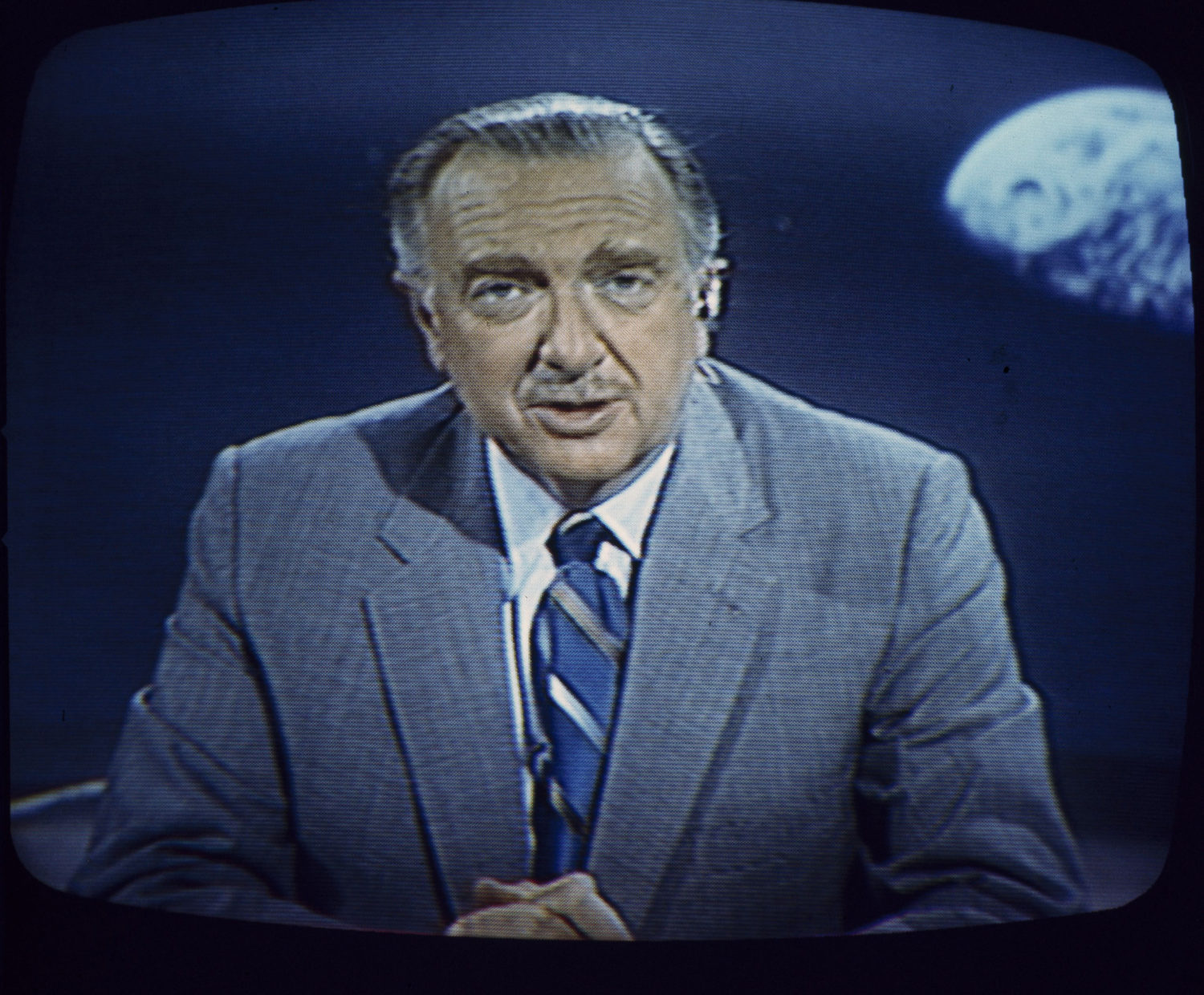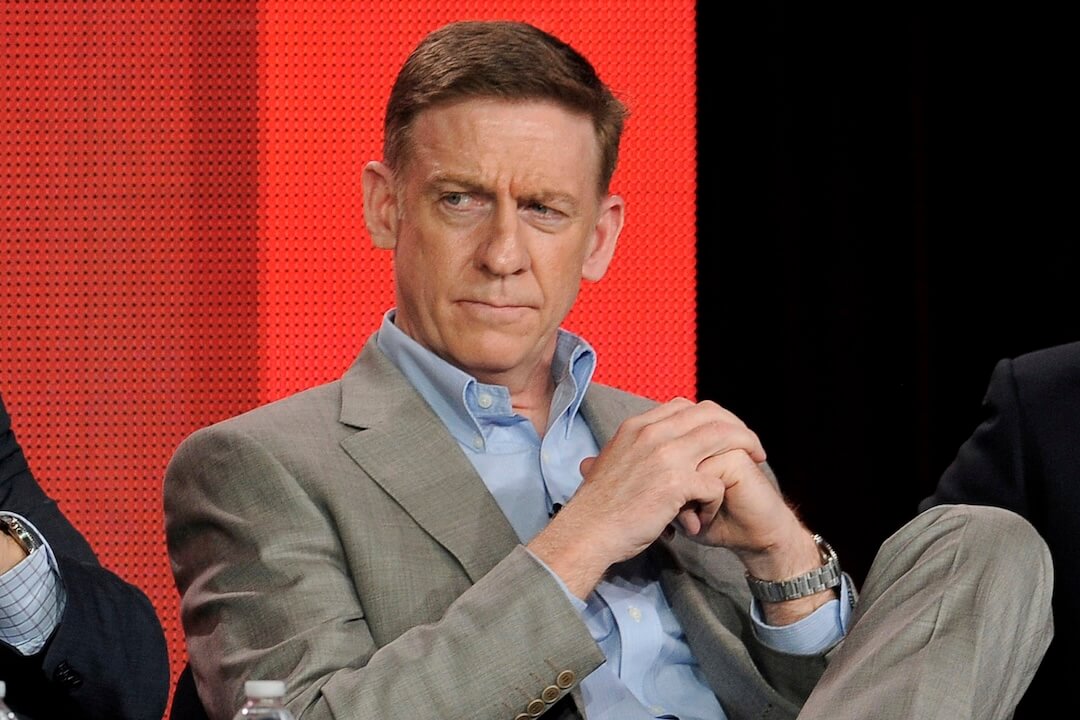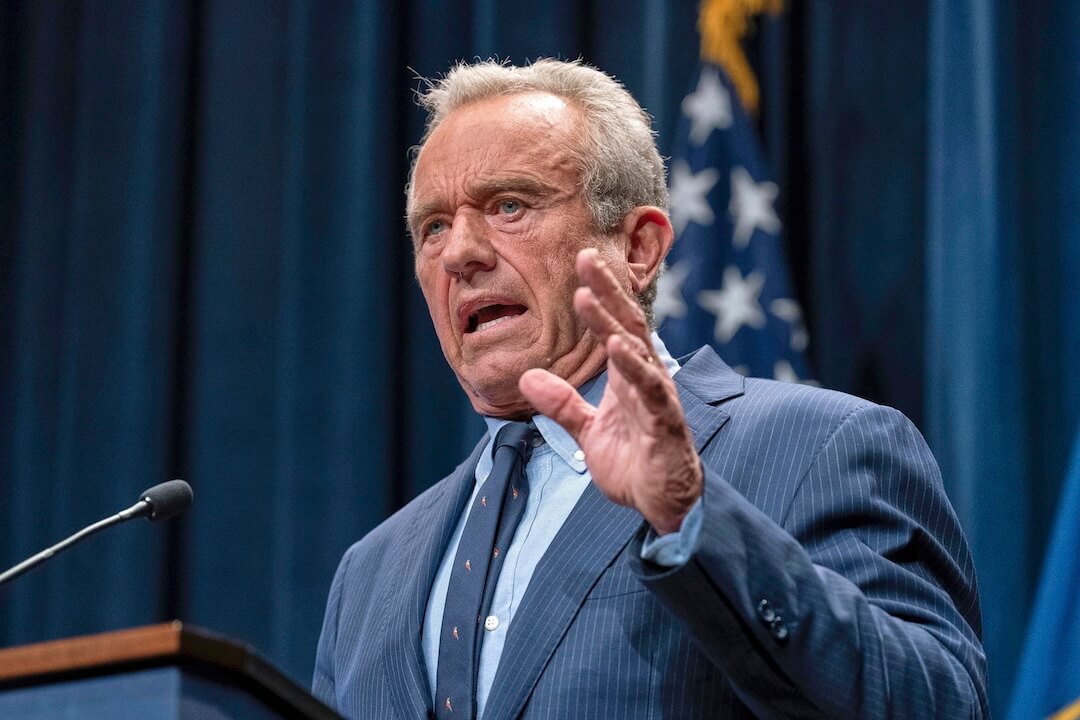With a yellow mesh bag in hand marked “CBS News Urgent,” a courier arrived at the temporary newsroom inside Studio 41. He caught sight of executive news editor Sanford Socolow standing near the CBS News internal teletype machine at the other end of the crowded, noise-filled space with 40 news staff at work.
Socolow opened the package, peeked inside, and said to me: “Take this newspaper upstairs and fast!”
At the time of the Apollo 11 broadcast, I was 23 years old and Walter Cronkite’s desk assistant. It was an extraordinary day: up and down those stairs delivering scripts, file packs, cue cards, black/blue Pentel liquid pens and food.
During commercial breaks, I took the orders. Cronkite instructed: “I’ll have tuna salad on rye with a Tab soda.”
On the two-story stage set, I ascended a dozen steps in a circular motion, left to right, reach the anchor desk, and handed the newspaper to producer Joan Richman.
Seated below the range of the TV cameras and glancing at the headline, she placed the bulldog edition of The New York Times in the downward gaze of Cronkite.
[the_ad id=”667826″]
In what remains an iconic image, the anchorman held up to the cameras the newspaper with its banner: “Men Land on Moon.” After the many launches from Cape Canaveral and the Kennedy Space Center, and his years of reporting on the space program, Cronkite gasped: “What a day!”
Looking at the studio monitors, and the sight of the astronauts transmitted from the surface of the moon, Cronkite was almost speechless, and with eyeglasses in hand, he confirmed:
“Armstrong is on the moon! Neil Armstrong, a 38-year-old American, is standing on the surface of the moon! On this July twentieth, nineteen hundred and sixty-nine.”
Years later in his memoir, “A Reporter’s Life,” Cronkite recalled: “That first landing on the moon was, indeed, the most extraordinary story of our time and almost as remarkable a feat for television as the space flight itself.”
The day of the lunar landing, the 32-hour television broadcast was the longest continuous live-origination news broadcast. Throughout the coverage, Cronkite conveyed to viewers: “Stop everything and watch us make history!”
Ninety million Americans watched the special events broadcast of Armstrong’s first step on the moon, and according to estimates, one-half were viewing CBS News. In a memo to the CBS organization, Frank Stanton, its president, wrote: “July 20 belonged to everyone. I mean history no injustice in saying that, in a very real way, it belonged to you.”
By 1969, Cronkite was a national figure, and perhaps more famous than the astronauts themselves. His anchoring the launch of Apollo 11 was his 21st broadcast of a manned space flight. In virtually every recounting of the moon landing, in films such as “First Man,” and Todd Douglas Miller’s documentary, “Apollo 11,” there is the tenor of Cronkite’s voice. He remains a central feature of our collective memory, a stage manager or the “directeur de scene.”
[the_ad id=”667872″]
For network news anchors of today, there are no such pretensions. Nor is there a single authoritative figure in journalism like Cronkite who might challenge the disparate voices of social media, right-wing ideology on cable TV, or the rapid ascendency of online television.
In a 1979 interview, Don Hewitt, Cronkite’s first producer and the man who invented the idea of a TV anchor, explained for me the essence of Cronkite’s appeal: “He brought everything to it. Here was a journalist who came off on television as everybody’s journalist. Like Babe Ruth and baseball, Charlie Chaplin and the movies, Walter Cronkite and the television screen; he’s more than an image, he’s integrity, strength and experience.”
With Cronkite’s introduction to a national audience in his reporting of the 1952 political conventions, one Washington figure confirmed: “Walter Cronkite taught me that getting across on television is all in the eyes, and looking square at the correct lens is the best way to project a speaker’s sincerity.”
The “one-man phenom” notwithstanding, for the Apollo 11 coverage, Cronkite was the top man in a 300-person army of CBS News employees. True enough, he had a hand in selecting his on-air analysts: Walter “Wally” Schirra, the former astronaut, and writer Arthur C. Clarke. Their chemistry proved to have a clear advantage over ABC and NBC. As one print advertisement noted, “CBS News had ‘Walter to Walter’ coverage.”
Like a circus high-wire act, Cronkite’s on-air performance was a combination of a fluid on-air interplay with reporters and correspondents, the off-camera gestures from the stage manager, and a lifeline: his listening to the directives of his executive producer Robert Wussler, conveyed via the control room by an earpiece.
Live remotes in 31 locations in the United States and 13 countries permitted Cronkite to speak to a range of reporters and guests. When each of these elements worked smoothly, the stagecraft projected confidence for viewers that Cronkite was alert to what was happening and what would happen next.
[the_ad id=”667878″]
During those long hours of the lunar landing, as the desk assistant, I climbed the stairs to the anchor desk a thousand or more times, where I stood, sat and even kneeled in place. That summer, I lost 15 pounds.
Of course, there were moments when the outside news of the Vietnam war would break in. From the newsroom in Studio 41, I picked up chatter from writers like Andy Rooney or Howard Stringer and overheard Roger Mudd and Harry Reasoner muse about Ted Kennedy on the very day that Chappaquiddick entered the political vocabulary.
A day or so after the final Apollo 11 broadcast, the one honoring Armstrong, Buzz Aldrin and Michael Collins with ticker-tape parades, I was driving home when highway traffic came to a total halt. At a gas station in Ridgewood, New Jersey, I asked the attendant what was going on.
He replied: “Young man, are you the only person who has not heard of Woodstock?”
For sure, men had landed on the moon, now thought of as a result of the Cold War as much as an engineering feat. Woodstock was outside my orbit, a cultural revolution that landed on a field in upstate New York, stopped traffic on Route 17, and made its history.






